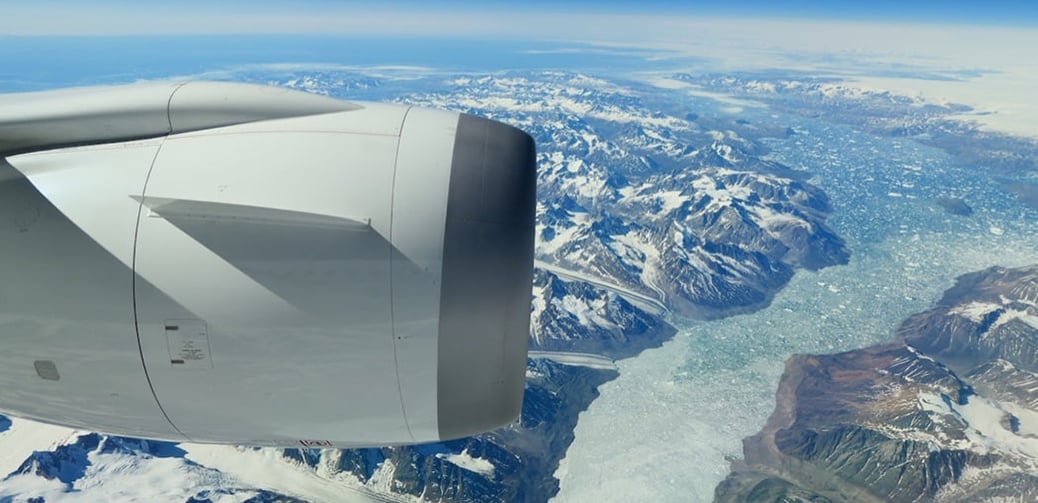If you have the choice, which plane should you choose to fly on, A350 Vs. A380 Vs. B787 Dreamliner, which plane is the best? Which has the best Business Class, First Class, and Economy Class (Coach) experience?
The A350, A380, and B787 Dreamliner are the world’s most advanced planes, produced by Airbus (Europe) and Boeing (USA).
Who Flys B787 Dreamliner Aircraft?
The first B787 commercial flight was in 2011, on All Nippon Airways. Airlines that fly this plane include: Aeromexico, Air Austral, Air Canada, Air China, Air Europa, Air France, Air India, Air New Zealand, ANA, American, Avianca, Azerbaijan, British Airways B787, see my Business Class review and First Class review, China Southern, Ethiopian, Etihad which I have reviewed in Busines Class, Hainan, JAL, Kenya, Korean, LATAM which I reviewed in Business Class, LOT, Norwegian, Oman, Qantas, Qatar which I have reviewed in Business Class, Royal Brunei, Royal Air Maroc, Royal Jordanian, Saudia, Scoot, TUI, United Airlines where I reviewed their Polaris Business Class (pictured above) Uzbekistan, Vietnam, Virgin Atlantic, Xiamen.
Who Flys A350 Aircraft?
The A350 is an improved version of the A330. The first A350 passenger plane took off in 2015, as part of the Qatar Airways fleet. Airlines flying this plane include Asiana, Cathay Pacific which I have reviewed in Business Class and Cathay Premium Economy, China Airlines, Ethiopian, Finnair which I have reviewed in Business Class, LATAM, Lufthansa, Qatar, Singapore I have reviewed in Business Class, Thai, Vietnam.
Who Flys A380 Aircraft?
The A380 is favored by airlines like Emirates and offers a double-Deker plane. It’s hugely spacious, quiet, stable (with an anti-turbulence system), has onboard showers (Emirates, Etihad), Onboard bar (Emirates, Etihad, Qatar) has stylish lighting and a tail camera, viewable from seat.
The seating in economy is very dense and the cabin pressures not quite as good, compared to 787, 350, but it still better than older planes. Airlines that fly this plane include; Asiana, Air France, British Airways which I have reviewed in Business Class and First, China Southern, Etihad, see my Business Class Review and Emirates which I have also reviewed in Business Class and Emirates First, Korean, Lufthansa, Malaysia, Singapore, Qatar which I have reviewed in Business Class & First and Qantas.
A350 Vs. B787
The A350 competes more with the B777 than the B787 – the two long-range, wide-bodied, twin-engine aircraft are often compared one to another since they feature the aviation industry’s newest gadgets and technologies. They both offer a big saving in fuel costs relative to the number of passengers they carry, which makes them very popular with carriers.
The A350 and the B787 are also the first large commercial aircraft to be constructed extensively from lightweight composites. Airbus and Boeing use reinforced plastic composites in 53% and 50% of the A350 and B787 fuselage, respectively. The main advantage of composites is that these components are lighter than similar parts made of aluminum (which means a lighter aircraft and thus less fuel burn). In addition, carbon-fiber reinforced polymers or plastics have increased resistance to corrosion and don’t suffer from fatigue to the same extent as aluminum, which translates into more durable airframes and lower maintenance costs.
Carbon fiber composites are also stronger than aluminum, which allows the skin of a B787 or A350 to tolerate a higher degree of pressurization. At high altitudes, there is less pressure in the outside air and thus less oxygen available in a given breath, hence why conditioned air is pumped (or ‘pressurized’) into an aircraft to simulate a lower altitude inside the cabin and create a survivable and comfortable environment above 14,000 ft (4,300 m).
While conventional aircraft are pressurized at 8,000 ft (or 2,400 m), the Boeing 787 Dreamliner and the Airbus A350 are pressurized to 6,000 ft (or 1,800 m). This 2000 ft (or 600 m) means that there is more oxygen and moisture in the air inside a B787 and A350, resulting in a noticeable increase in passenger comfort. This higher cabin pressure reduces the risk of dry eyes and skin, headaches, severe jetlag, respiratory problems, and the formation of blood clots in deep veins (deep venous thrombosis).
The A350 has a tail camera, while the B787 doesn’t have one. I am one of those passengers who likes to follow the plane’s movements on the TV screen as it takes off or lands, so the A350 is clearly the winner here. In addition, I am a nervous flyer, and having a wide, frontal view via the tail camera instead of the narrow side view via the window eases my anxiety and makes me feel more relaxed. It has to be noted that the A350 tail camera is offered as an option by Airbus to its customers, and Singapore Airlines is so far the only airline that has decided not to install one.
The B787 features the largest windows in the industry, about 65 percent bigger than a standard airline window. And Boeing took it even one step further by providing first-of-its-kind touchpad controls to electronically dim the windows on the B787. Despite this fancy feature, which is fun the first time you try it out, I am not a fan of the B787’s electro-chromatic dimmable windows and prefer the A350’s old-fashioned, pull-down blinds (albeit the A350’s windows are not as large as on the B787).
The problem with the Dreamliner is that it can take up to 5 minutes to dim or brighten your window. Also, in some airlines (such as British Airways), the cabin crew has the option to electronically dim all windows at once, and you can’t override that command at your own seat. In addition, the shutter-less windows remain translucent at their darkest setting, although they can be dimmed sufficiently for sleep and watching videos. Apparently, I am not the only one who dislikes the B787’s dimmed windows since some airlines have retro-fitted pull-down blinds over their Dreamliner’s windows.
The fuselage of an A350 is around 5 inches or 13 centimeters wider than its counterpart of the Boeing 787 Dreamliner. It may not sound like a major difference, but with nine seats abreast in Economy Class – the current standard configuration in both aircraft types – the extra half inch or 1,4 cm per seat in the A350 does make the flight experience more comfortable. However, that difference may soon turn out in favor of the Dreamliner since Air Caraibes will be the first airline to install 10 seats per row in its A350 planes, which will be worse than 9 abreast on the Dreamliner and might be the new trend for the A350.
Nevertheless, the A350 feels very spacious, even in Business Class, because of its straight sidewalls and almost flat ceiling. It is the tallest ceiling of any commercial aircraft, with extra-large overhead bins, especially compared to the B787’s visually relaxing but more cramped design with sweeping archways.
A380 Vs. A350 Vs. B787
All three planes offer a very similar experience from a passenger’s perspective, which far exceeds the one offered onboard older, more conventional aircraft types.
Both the Dreamliner and A350 have far quieter cabins than conventional aircraft. And the A350 is even quieter than the B787 Dreamliner, thanks largely to the Automatic Noise Abatement Departure Procedure (NADP), which optimizes the thrust and flight path to reduce noise, and to its giant low carbon emission custom-designed Rolls Royce Trent XWB, the most fuel-efficient and cleanest (in terms of emissions) engine flying today. In fact, the A350’s cabin is the quietest of any twin-aisle aircraft, with a typical noise level of 57 decibels in the cabin at cruising altitude, about equal to the volume of a normal conversation. It has to be noted that the A350’s big brother, the A380, has an even quieter cabin, which is especially noticeable when you are seated on the upper deck.
When you are a First Class addict, you have to avoid flying on an A350 at all costs since none of its operators (e.g., Singapore Airlines, Qatar Airways, Finnair, LATAM, Cathay Pacific, and China Airlines, to name a few) has installed a First Class cabin onboard the plane. In contrast, the A380 features First Class on many of its planes, as does the B787-9 Dreamliner that is part of the fleet of British Airways and Etihad Airways who do feature a First Class cabin.
The Big Disadvantage Of The B787 Dreamliner For Nervous Flyers
While designing the plane, Boeing decided to install powerful lithium-ion batteries on the B787, which offer greater capacity for less weight and, if required, more opportunities to power aircraft systems. However, this new and rather young technology caused major safety problems. In 2013, all 50 B787 Dreamliners in service were grounded for multiple months after fires broke out on an All Nippon Airways and Japan Airlines B787 in two unrelated incidents, both caused by thermal runaway events of the lithium-ion batteries.
The USA’s National Transportation Safety Board investigated the incidents and assigned blame to several groups, including the Japanese battery manufacturer and Boeing, for not catching the problem earlier. To make the B787 airworthy again, Boeing redesigned the battery and charger and designed a steel box to contain fires and vent hot gasses outside the plane.
However, following another battery fire incident on board a Japan Airlines B787 during routine maintenance in 2014, there is concern among some aviation experts that the solutions put in place by Boeing are not able to cover the full range of possible failure modes and that Boeing does not understand the root cause of the battery failure.
It’s an uneasy thought that always flashes through my mind when I have to fly the B787 across a large body of water or wilderness where no airport is immediately available in a worst-case scenario. In the wake of the Boeing 787 Dreamliner’s battery fires, Airbus decided to drop Lithium-Ion batteries and switch to traditional nickel-cadmium batteries for its A350 passenger jet.
Conclusion
I clearly prefer the A350 and the A380 over the B787, mainly because of the quieter, wider, and taller cabin, but also because of the plane’s conventional pull-down blinds and lack of documented battery problems. I feel the least jet-lagged on the A350. The more natural cabin pressure, humidity, and noise are instantly comforting.
The A380 is fantastic for its innovative bars and showers, but, of course, this is only enjoyed by those in Business and First. The seating in economy dense and the cabin pressures are not quite as good as the other two, so this is not a good choice in Economy but my second choice for Business or First.
The 787 is also an incredible plane, but with the battery issues, I feel less at ease flying on this plane.
Bottom line: All three are better than an older plane. The humidity & noise gives a much more enjoyable flight experience.
If you are planning to book a flight, it is worth reading our 10 tips to find cheap long-haul business class flights.
This article was inspired by an article by our friends at The Luxury Travel Expert.
Copyright Luxury Travel Diary 2014 - 2024. Duplication outside of luxurytraveldiary.com is forbidden.
Note: Benefits & upgrades subject to availability. Benefits offered correct at the time of writing. Terms & conditions apply. Enquire for more information. Posts may be sponsored by the proprietor or brand being appraised. All opinions remain our own & are in no way influenced.















